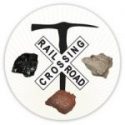SEE ALSO section in main menu entitled “BMRR HISTORICAL TIMELINE.”
*****************
*****************
The following articles by Lyle Key were published in issues of The Dixie Line magazine of the L & N Historical Society. NOTE: To return to this page after reading an article, you may need to click your browser’s “Back” arrow/button.
“Birmingham Mineral Railroad’s Red Mountain Route” Part I, April 1997
“Birmingham Mineral Railroad’s Red Mountain Route” Part II, June 1997
“Birmingham Mineral Railroad’s Red Mountain Route” Part III, August 1997
“Riding the Red Mountain Route” April 1997
*****************
Select items from the BMRR Historical Timeline section on this website which provide pieces of the history of the BMRR:
1887 — L & N passenger depot (sometimes referred to as “Union Station”) was completed in downtown Birmingham at the intersection of Morris Avenue and 20th Street North. The total cost of $134,163.95 included expenditures for the station itself as well as for passenger tracks, a trainshed, etc. (Source: “The L & N Employees’ Magazine” February 1940. Provided courtesy of Tom Denney.)
1890, 1892, 1896, 1905, and 1907 — BMRR is shown on older maps as serving mines on the north side of Red Mountain in the area that is now Red Mountain Park. Some of those maps spanning from 1890 to 1907 are USGS maps, and one of the maps (dated 1896) is of the Spring Gap Mine (aka TCI Ishkooda No. 11 Mine). Later USGS maps (starting in 1953) show those tracks as no longer being connected to the BMRR but instead being connected to Tennessee Coal, Iron, and Railroad (TCI) tracks via the High Line to Fairfield. (Sources: 1890, 1892, 1905, 1907, and 1953 USGS maps; 1896 map of Spring Gap Mine in Report on the Valley Regions of Alabama, Part II, Geological Survey of Alabama, 1897.) (Spring Gap Mine map provided by Tom Denney.)
1891 — In addition to passenger service, the BMRR was providing mail service and railway express service. (“Railway Express” was the parcel delivery system that can be roughly equated to today’s UPS or FedEx.) In addition to the mining and iron industry materials it was hauling, the BMRR also was hauling significant tonnages of products of agriculture, animals (livestock), forests, and manufacturing. (Source: Eleventh Annual Report of the Railroad Commissioners of Alabama for the Year Ending June 30th, 1891, Pages 123 and 127. Provided by Tom Denney.)
Early 1930’s — New raised platform at L&N “Union Station” in downtown Birmingham went into use after completion of the grade separation project to elevate the tracks above street level. That original platform with its butterfly shed (overhead roof structure and support pillars) is still in use today as the platform for the Amtrak station.
December 29, 1982 — L&N and Seaboard systems “merged” to form the Seaboard System Railroad Company, thus ending the L&N as a separate entity. The Seaboard System Railroad Company would undergo several name changes through the years (for example, “Chessie System”) before taking its current name, CSX Transportation.
